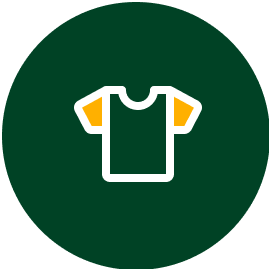Garment Manufacturing
Fabrics are cut, sewn, and assembled into garments, generating waste and often relying on labor-intensive processes.

Textiles play a crucial role in our daily lives, covering products from clothing to industrial fabrics. The production and consumption of textiles operate in a largely linear fashion, leading to significant waste. In Dublin, around 110,000 tonnes of textiles are discarded as waste annually, with 64,000 tonnes coming from household waste, primarily clothing. This amounts to significant environmental impacts, as most of these textiles end up in landfills or waste-to-energy plants. Each person in Dublin contributes roughly 23 kg of textile waste per year.
Major sources of textile waste include discarded clothing, household linens, and industrial fabrics, with a large portion coming from household bins. The circular economy approach seeks to reduce this waste through better recycling and reuse practices.

Globally, textile waste is a growing issue. Each year, approximately 110,000 tones of textiles are discarded, with the majority ending up in landfills or incinerated in waste-to-energy plants. This includes various sources of waste:

Household Waste (58%)
This constitutes the largest portion of textile waste. About 64,000 tonnes of textiles, predominantly clothing, are discarded through household waste via kerbside collections. The large volume of clothing waste highlights the issue of overconsumption and the rapid disposal of items after limited use.

Commercial Collections (24%)
Around 57,000 tonnes of textiles are collected through commercial textile banks and charity shop donations. These are generally collected separately for reuse or recycling. However, a significant portion is still discarded or sent to landfill.

Recycling (2-3%)
Currently, only 15,000 tonnes of textiles are recycled annually into products such as rags or fibers. This limited recycling rate underscores the inefficiencies and challenges in textile waste management.

Vintage and Online Reselling (10%)
Approximately 1,500 tonnes of textiles are resold through vintage shops and online platforms each year, providing a secondary market for pre-owned items.
The approximate percentages provided are based on general waste composition data from reports and studies conducted in recent years. These figures are often drawn from national and regional waste management reports, EU waste statistics, and specific studies conducted by environmental agencies.
Textile Swatches:
Small samples of fabric, often used for testing or design purposes, that are left over and discarded.
End-of-Rolls:
Remaining lengths of fabric left at the end of a production roll.
Damaged Textiles:
Fabrics that have defects or damage, making them unsuitable for their intended use.
Clothing Samples:
Prototype or sample garments that are discarded after their evaluation.
Clothing Samples:
Used textiles such as old linens, curtains, or upholstery that are no longer needed.
Cut-and-Sew Textiles:
Off-cuts and scraps generated during the garment manufacturing process.
Sampling Yardage:
Extra fabric used for sample-making, which is not used in final products.
Unsold Clothing:
Garments that remain unsold at the end of a season or product cycle.
Secondhand Clothing:
Previously worn clothing that is discarded or donated.
Textile production is highly resource-intensive, consuming vast amounts of water, oil, and land, while often involving toxic chemicals. The process also generates significant pollution, including carbon emissions and microplastics.
Natural fibers like cotton are harvested, or synthetic fibers like polyester are produced from petrochemicals, consuming significant water, land, and energy resources.
Raw materials are processed into yarn and fabric through spinning, weaving, and dyeing, involving energy use and chemical treatments.
Designers create patterns and choose materials, setting the product’s sustainability profile through decisions on fabrics and production methods.


Fabrics are cut, sewn, and assembled into garments, generating waste and often relying on labor-intensive processes.
Finished garments are transported, packaged, and sold, adding to the product’s carbon footprint.
The garment’s environmental impact continues during washing, drying, and eventual disposal, with synthetic fibers releasing microplastics.
Discarded garments may end up in landfills or be recycled, with limited infrastructure for textile recycling.
Incorporating sustainable fashion into your wardrobe is easier than you think. Repair and care for your clothes to extend their life, and when they’re worn out, recycle or donate them instead of throwing them away. Small changes in how you shop and maintain your wardrobe can significantly reduce your fashion footprint. If you’re unsure where to start, look for local places that offer repair, recycling, or donation services to help you on your journey to sustainability.

Extend the life of your clothing by mending tears, replacing buttons, or fixing zippers. Repairing garments prevents waste and reduces the need for new purchases.

Transform old or damaged clothes into stylish, renewed pieces. By redesigning or remanufacturing, garments gain a fresh appearance and purpose, extending their lifecycle. This process not only breathes new life into your wardrobe but also reduces the need for new materials, contributing to a more sustainable fashion industry.

Donate or sell clothing you no longer need. Redistributing garments keeps them in use longer and reduces the amount of textile waste that ends up in landfills.

When garments are beyond repair or redesign, recycle them. Textile recycling processes recover fibers to create new materials, reducing the need for virgin resources and minimizing waste.

Looking to live more sustainably? Our directory of eco-friendly resources and services in Dublin makes it easy to find everything from zero-waste stores to green energy providers.